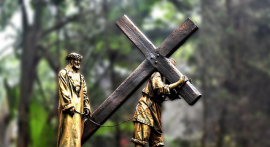
Twenty five years ago, the world witnessed how the space actually looks like, thanks to NASA's Hubble Space Telescope. The iconic image, called "Pillars of Creation," shows how the solar system would have looked like 7,000 light years ago.
NASA celebrated the image's 25th anniversary by recreating the wondrous image. Astrologers did this by pointing the telescope to the Messier 16 or M16, also known as the "Eagle Nebula." The new iconic image produced a sharper image and a much wider view.
The image also features the pillars' breathtaking silhouettes, surrounded by the stars.
The 6,780 x 7,071 image is huge at 33MB. Downloading it is a small feat, especially to those who are great fans of the first image released in 1995.
The new, high definition image, according to Hubble Observations co-leader Paul Scowen, was captured at a short-lived and unique moment in evolution.
"The ghostly bluish haze around the dense edges of the pillars is material getting heated up and evaporating away into space," Scowen explained.
The pillars are still present after more than 20 years due to their "dense heads shadow underneath." But scientists noted some changes on the pillars since it was first captured in 1995. A few stars were born and some have also died over the years.
"These pillars represent a very dynamic, active process," Scowen said. "The gas is not being passively heated up and gently wafting away into space. The gaseous pillars are actually getting ionized, a process by which electrons are stripped off of atoms, and heated up by radiation from the massive stars. And then they are being eroded by the stars' strong winds and barrage of charged particles, which are literally sandblasting away the tops of these pillars," NASA shared on their official website.
Hubble Space Telescope's photo 25 years ago featured 32 images using four different cameras on board. It was created using light emissions from various elements: red for ionized sulfur, green for hydrogen, and blue for oxygen atoms.
The 25th anniversary images have been released this month, but the actual anniversary of the Hubble Space will be on April.

















